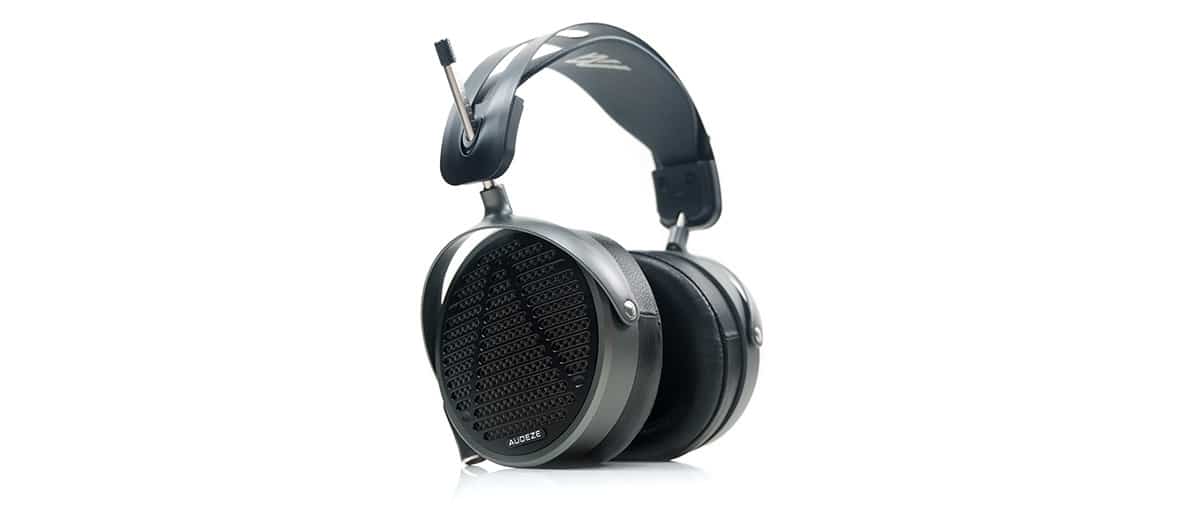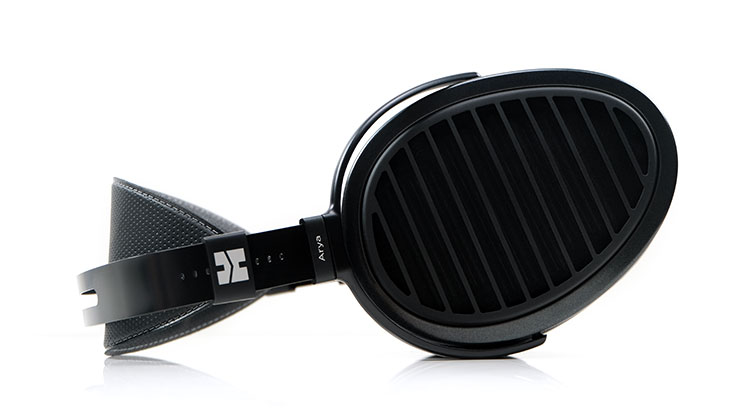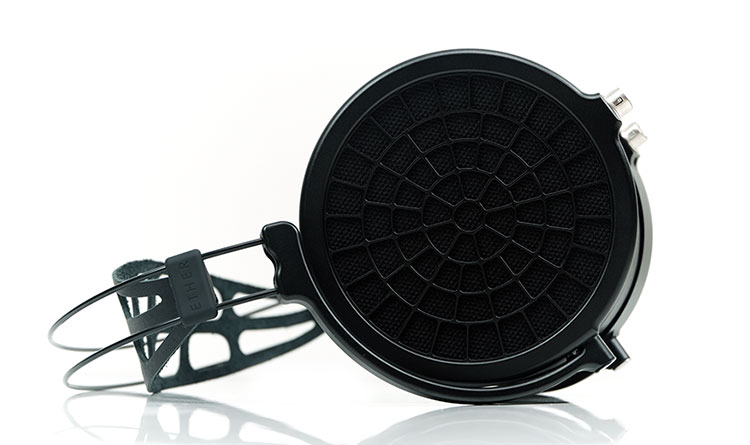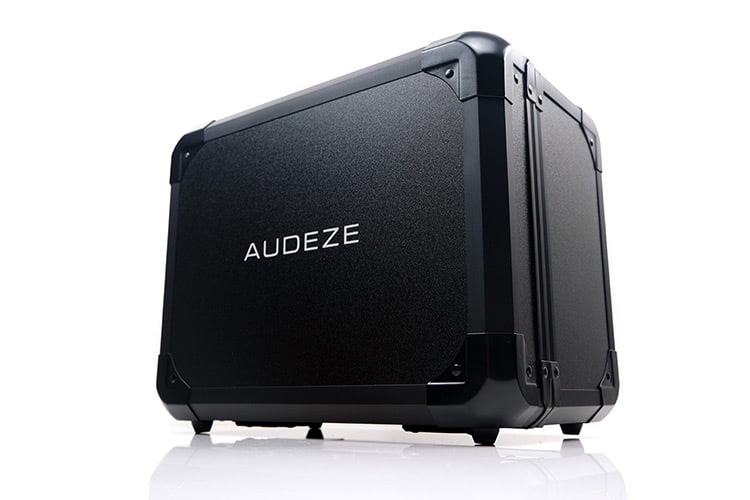Select Comparisons
All comparisons were completed with a mix of the Ferrum OOR amplifier combined with the HYPSOS PSU and the ERCO DAC component as the main source. Testing was done with the stock single-ended cables of each headphone to match the MM-500 stock cable.
Audeze LCD-X (Original Edition)
Sadly, for one reason or another, I do not have the LCD-X 2021 to compare with but I do have the original LCD-X version launched in 2013/14 which might present a very nice synopsis of Audeze tuning goals from the early years all the way up to now.
$1199
Technical
For me, the LCD-X, along with the XC symbolized the launch of Audeze’s second phase of the LCD series with the introduction of Fazor technology. Something which is ever-present in most Audeze headphones, including the MM-500, with the rare exception being the recent Classic re-launches.
The original also shares the use of a neodymium magnet for its arrays though in 2014 this was a double-sided arrangement which contributed a lot to its much heavier 611g weight compared to the MM-500’s lighter 495g.
The driver itself is the older but larger 105mm planar transducer with a then thinner diaphragm compared to the pre-Fazor LCD-2. Since then, it has gone through some significant tweaks in terms of diaphragm thickness with both the MM-500 and the LCD-X 2021 using the current Ultra-Thin Uniforce diaphragm.
One interesting theme between the original LCD-X and the MM-500 is the emphasis on being easy to drive with both headphones offering better than average efficiency levels for the time.
The LCD-X back in 2014 was rated at 22Ω and 96dB SPL. The MM-500 is even more efficient at 18Ω and 100dB SPL so whilst neither requires huge amounts of power, the MM-500 should further refine the original technical goal of the LCD-X.
Design
The original LCD-X is both bigger and heavier with a design that whilst not uncomfortable, certainly makes its presence known on your head a bit more, even compared to the strong clamping MM-500.
And that for me is probably the most immediately noticeable difference between the MM-500 and LCD-X. With the latter, it is all about vertical pressure with some decent but not a huge amount of lateral clamping pressure.
That meant a tendency to create scalp hotspots with that narrower single-strap headband and a bit of movement also when up and about. The 2021 version has brought in a very wide pressure strap system though which should improve things greatly.
The MM-500 is much more lateral in its pressure bias so it is far more secure on your head. The new split spring steel LCD-5 type headband combined with a pressure strap mitigates any potential for hot spots.
If I had to pick one over the other it would be the MM-500 for sure with less weight, and better pressure balancing with both using the plush leather pads with wide surface contact areas.
Looks-wise, the MM-500’s smaller driver means a more compact look as well as a more modern-looking engineering approach. It is more streamlined compared to the older LCD-X with a lot of the LCD-5 articulation and construction shaving off that weight despite both using aluminum materials.
Performance
Discussions on the differences between these two headphones it like the ‘old sound’ Audeze fan debating it out with ‘new sound’ owners.
I remember when the LCD-X first came out and it was described as their most neutral offering to date and yet compared to the MM-500, it’s pretty obvious it belongs in the Gen 1/2 phase of Audeze tuning.
How so? Well, both have a nice punch to their bass response but overall, the LCD-X has a bit more warmth and also a bit more upper bass to lower-mids bloom. Now the MM-500 also has a bass to lower-mids rise but it continues in Harman fashion to a mid-forward 2-3k peak whereas the LCD-X dips in the opposite direction.
From 1-4k the LCD-X is south of neutral with less head-gain save for a minor 3k bump which gives it this more relaxed tone for vocals but also a mix that makes the upper-bass and vocal imaging compete a bit more for the same staging space.
The MM-500 is more neutral and cleaner sounding through the mids and perceivably more resolving. It elevates the vocal image a bit further forward creating a better stretch in the stereo imaging for me and making it easier to pick out higher pitching instruments above that bass to the lower-mids performance.
Treble is also more coherent with a slight sub-Harman curve dB elevation with its highest peak around 5k then a smooth linear drop to 10k. Nothing peaky or uneven in application.
In contrast, the LCD-X is more uneven though in listening I think it is not quite as uneven as any measurement might suggest. The lack of amplitude from 1-4k will take the sting out of its 5k-6k and 8-9k peaks for mids timbre.
HIFIMAN Arya Stealth Magnet Version
The Stealth Magnet Version of the Arya was launched in late 2021 and reviewed by us in April of this year, Its price point relative to the MM-500 makes this one of its closest competitors for audiophiles’ attention.
$1599
Technical
Like the MM-500, the Arya Stealth is also an open-back circumaural headphone designed primarily for indoor use though the driver shape is a more elongated 65 X 100 mm compared to the round MM-500 90mm version.
Both companies have been pushing hard also with their distortion control and ultra-thin diaphragms. You have HIFIMAN’s nano-particle thickness NsD or NEO “superman” diaphragm combined with their Window shade system for distortion and vibration. Whereas the MM-500 uses the Ultra-Thin Uniforce design and Audeze’s Fazor system for phase management.
Like the MM-500’s shift to the LCD-5’s 14 Neodymium N52 Fluxor™ magnet array, HIFIMAN has also been quickly upgrading a lot of its older headphones with their new Stealth Magnet technology of which the Arya is one of the more recent ones.
One of the key differences though is the use of a dual-sided magnet array on the Arya as opposed to the single-sided design from the MM-500 and as such, the Arya is less efficient at 32Ω impedance and 94dB SPL compared to just 18Ω and 100dB SPL.
Design
Hugely different design approaches and which one suits you will probably come down in some part to how you like your headphone to sit on your head as well as your usage scenarios.
The Arya Stealth is a little lighter at 430g compared to the 495g of the MM-500 and you do feel that difference in your hand. However, it is really the pressure distribution when on your head that makes out the most significant difference for me.
The Arya Stealth is more comfortable with a much more evenly applied pressure distribution both vertically and horizontally. The clamping is far less noticeable with the ovoid cup/pad designs more open and not as close to your ears. Both are on par for vertical pressure distribution though so neither will create irritating hotspots on your scalp.
The one ‘head’ advantage of the MM-500 is how secure it sits on the head. It is far steadier and here is where I go to the usage scenarios because materials and design-wise the MM-500 is much more robust for rapid movement in a professional environment.
The Arya Stealth materials feel more brittle and more likely to fall apart in demanding conditions. This is where busy studio pro and relaxed audiophile distinctions kick in.
Even putting that aside the quality of the MM-500 materials is empirically superior regardless of taste. Once you throw them into daily usage the distinction on what stress and strains both can handle becomes amplified with the Arya Stealth coming up short.
Performance
Probably the most immediate difference when A/B’ing these two is their staging quality. The MM-500 is more intimate with a small live stage feel whereas the Arya Stealth feels airier with imaging more akin to a large concert hall.
There are some tuning differences that accentuate that impression also with the Arya Stealth offering more amplitude from its upper mids and treble response from 4-8k giving the stage some perceived additional energy and headroom whereas the MM-500 brings it more down into the mids and vocal imaging to the fore.
The imaging of the Arya Stealth can sound forward also around 2-3k and not too far off the Harmon Target. However, since its staging is more diffuse and not as rounded as the MM-500 it doesn’t feel as immediate in its impact. The Arya 1-2k region is south of neutral so any imaging there is doing to drop in the presence and tonal aggression.
The Arya low-end has a few dB also over the MM-500 so the bass response can sometimes feel gutsier but there is a cut in the lower mids for enhanced separation whereas the MM-500 goes in the opposite direction by raising that same 500Hz to 1k area.
Combined with the stronger treble emphasis the Arya Stealth has a stronger harmonic contrast whereas the MM-500’s general timbre is slightly more to the even harmonic side with a smoother and fuller tonal quality.
Dan Clark Audio Ether 2
A long-established flagship planar headphone, (only recently usurped by the new Expanse flagship) launched by DCA in late 2018 and reviewed by us in early 2019. The Ether 2 seems quite reasonably priced by today’s flagship standards.
I must also point out that this is the Ether 2 suede pad edition from their 2020 System Upgrade options which sounds a little more balanced, smoother, and more open sounding than the original.
$2299.99
Technical
Like the MM-500, the Ether 2 is an open-back circumaural planar magnetic headphone though not specifically targeting the pro-audio market.
It marked the first driver that DCA designed from the ground up that integrated their TrueFlow air flow management system alongside their existing V-Planar ‘folding diaphragm’ technology. You could consider the TrueFlow to be similar in intent to the MM-500’s Fazor design for waveguide management.
The driver inside the Ether 2 is also slightly smaller at 71 x 45mm compared to the 90mm radius of the MM-500, and both use single-sided magnet arrays. The impedance values are very competitive between both with the former at 16Ω and the latter at 18Ω.
However, the MM-500 is by far the more efficient of the two headphones for SPL with the Ether 2 coming in at a much lower 92dB as opposed to 100dB. You will find yourself needing a stronger combination of voltage and current to drive the Ether 2 to satisfactory levels.
Design
I honestly think the MM-500 and the Ether 2 are two of the best-designed planar headphones on the market today. Both have vastly different design languages though both use the traditional circular cup form factor as their base.
The Ether 2 is marginally the bigger in terms of dimensions but for weight, the MM-500 is heavier by around 200g. That’s a big difference both in the hand and on your head.
A lot of that is simply down to material choice with the MM-500 going for a more robust and extensive machined aluminum frame and a spring steel headband design and the Ether 2 opting instead for Nitinol for the headband with lots of areas ‘chopped off’.
By chopped off I mean slimmer cups, half a gimbal on each side, no rods for adjustment, and no additional housing for the Hirose connectors. The faceplate itself, though striking. is also super slim with less metal used in the design.
This particular sample also uses suede pads which are lighter than the leather pads from the stock edition. I would suggest you go with the new pads because the original pads actually make the Ether 2 less comfortable than you might expect due to them sitting so close to your outer ear.
Yes, the weight on your head and general pressure balance is superior to the MM-500. Versatility wise the Ether 2 might be one of the few designs I would trust to be robust enough in a studio though not quite to the same level as the MM-500.
However, the weight advantage is offset with the stock pad ear irritation which is in complete contrast to the MM-500 whose plusher leather pads are very comfortable indeed.
Performance
The big difference between these two for me is the mids tuning. The suede pads on the Ether 2 switch up to a more euphonic timbre and they also deliver a more diffuse staging quality than the stock leather pads and the MM-500.
Primarily this comes from a more relaxed midrange which will give the perception of both vocal and instrumental positioning a bit further back but it does add some additional punch to compensate with an elevated mid-bass and a treble that’s peakier around 8k.
The MM-500 really pushes much harder on lifting the mids impact so they are instantly more forward sounding. In fact, the entire stage just moves forward a good few meters in terms of imaging.
The overall soundstage feels a bit more rounded and intimate and, in turn, it is the more energetic and vibrant of the two headphone presentations.
I think a lot of that energy comes from how percussion gets teased out on both headphones. Both deliver a nice fundamental though the Ether 2 edges it in terms of mid-bass punch, just slightly more elevation there.
However, the more forward upper mids of the MM-500 also tease out a more dynamic and impactful higher pitching percussion, for example, rim hits and cymbal crashes.
You get both the fundamental and the higher pitching percussion slaps ring a bit louder and these are easier to pick out on the MM-500 whereas the softer tuning on the Ether 2 melts them a bit more into the background.
Our Verdict
The Audeze MM-500 is probably one of the most rounded headphones releases the company has launched to date.
By that I mean it’s going to appeal to a much wider audience beyond the pro-audio user with an enjoyable, high-energy tuning that works wonders with my own preferences such as hard rock, and a design aesthetic that is simply gorgeous to hold and look at.
I still have some slight issues with the fitting but it does up the game a bit more from the LCD-5 with the plusher pads and bendy spring steel headband which shapes over time. If Audeze can also find a way to widen the stock cable jack options to balanced or 4.4mm then that would be a nice bonus also.
The LCD-5 is still the technical master and I point you to that if you want this type of tuning with an even higher level of resolution. For sheer enjoyability, though the MM-500 makes the grade for me and at a very reasonable price for such an excellent performance also.
Audeze MM-500 Specifications
- Transducer type: Planar Magnetic
- Magnetic structure Fluxor™ magnet array
- Phase management Fazor™
- Magnet type Neodymium N50
- Diaphragm type Ultra-Thin Uniforce™
- Transducer size 90 mm
- Maximum SPL >130dB
- Frequency response 5Hz – 50kHz
- THD <0.1% @ 100 dB SPL, 1kHz
- Sensitivity 100 dB/1mW (at Drum Reference Point)
- Impedance 18Ω
- Max power handling 5W RMS
- Min recommended power >100mW
- Recommended power level >250mW
- Weight 495g





